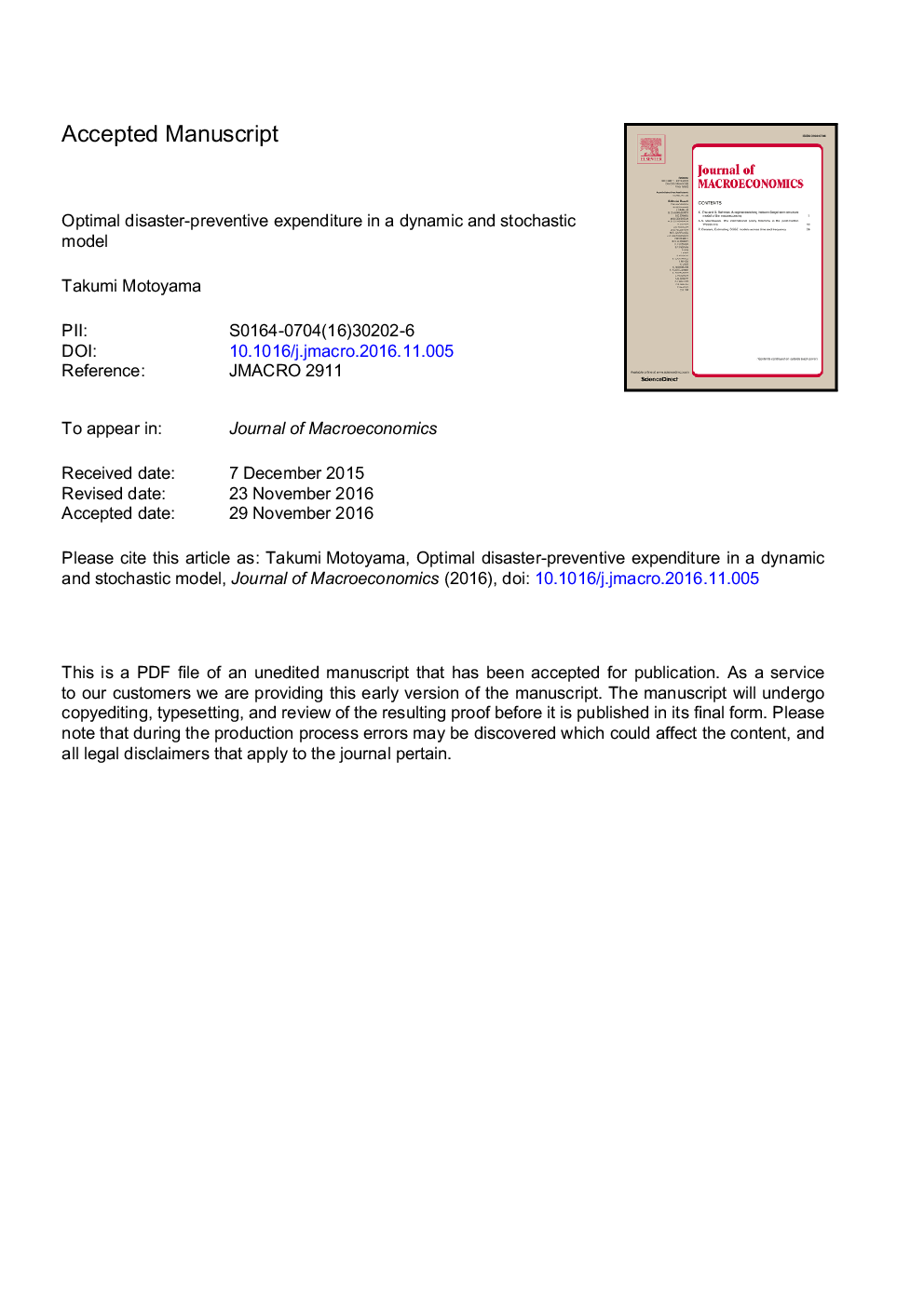| Article ID | Journal | Published Year | Pages | File Type |
|---|---|---|---|---|
| 5101303 | Journal of Macroeconomics | 2017 | 41 Pages |
Abstract
The purpose of this study is to present an analytical framework for publicly optimal disaster-preventive expenditure. We examine the optimal policy combination of tax rate, disaster-preventive expenditure, and productive government expenditure in a neoclassical growth model, in which natural disasters occur stochastically and partially destroy existing capital. Based on this model, we can decompose the welfare effect of raising preventive expenditure into three effects: the damage reduction, crowding out, and precautionary effects. By identifying these marginal benefits and costs, we obtain the policy conditions that maximize household welfare. Furthermore, we show that optimal prevention is increasing in disaster probability, and by using a numerical example, we show that there is an inverse U-shaped relationship between the expected growth rate and disaster probability.
Keywords
Related Topics
Social Sciences and Humanities
Economics, Econometrics and Finance
Economics and Econometrics
Authors
Takumi Motoyama,
